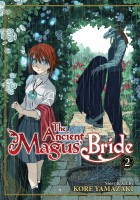My News and Reviews
Two posts went up at Experiments in Manga last week in addition to the usual My Week in Manga feature. The first was the Bookshelf Overload for July in which I talk a little about my manga purchases for the month and the fact that I went a little overboard during some recent sales. The second was a brief wrap-up of my recently completed horror manga review project; it took me around a year and a half to review each volume in Setona Mizushiro’s After School Nightmare and Yuki Urushibara’s Mushishi. I’d like to do another review project in the future (and have readers of Experiments in Manga vote on the featured manga as they have for the past two projects), but since I’m currently following reduced posting schedule I’m going to hold off on that for the moment.
Elsewhere, NPR recently released a segment featuring food manga like Food Wars. (Interestingly, NPR was actually where I first learned of Death Note.) The seventh part of “The Sparkling World of 1970s Shojo Manga” was posted at The Lobster Dance and focuses on Sailor Moon and Revolutionary Girl Utena. Also posted last week were not one, but two interviews with Naoshi Arakawa, the creator of Your Lie in April, from when he was visiting the United States for Anime Expo: Misaki C. Kido interviewed Arakawa for Kodansha Comics while Deb Aoki interviewed Arakawa for Anime News Network. And since I’m mentioning interviews, manga translator Zack Davisson was also interviewed over at The Comics Journal about Shigeru Mizuki’s Kitaro.
Finally, a bit of licensing news: Viz Media announced at Otakon that it would be releasing Akira Himekawa’s The Legend of Zelda: Twilight Princess, Kyousuke Motomi’s Queens Quality (the sequel to QQ Sweeper), and Takako Shimura’s Sweet Blue Flowers. For me, the most exciting and unexpected license was Sweet Blue Flowers. Digital Manga previously had the rights to the series but only released one volume of a less-than-stellar digital edition. (Jocilyn Wagner posted a guest review of the manga here a while back.) Before that, a version of Sweet Blue Flowers was available through the now defunct JManga. Shimura’s Wandering Son is a tremendously important series to me, so I’m very happy that Sweet Blue Flowers will be receiving the attention it deserves. Ideally, if the series does well, it could hopefully encourage Fantagraphics to release more of Wandering Son.
Quick Takes
 Haven’t You Heard? I’m Sakamoto, Volumes 2-4 by Nami Sano. I greatly enjoyed the first volume of Haven’t You Heard? I’m Sakamoto, so it was only a matter of time before I got around to finishing the rest of the series. I love the manga’s absurdity, humor, and over-the-top scenarios. First and foremost, Haven’t You Heard? I’m Sakamoto is a comedy, but it also has heart–the fourth and final volume in particular is surprisingly touching. While I’m sure I would have enjoyed reading more Haven’t You Heard? I’m Sakamoto, four volumes seems to be the right length for the series. It’s short enough that the the gags still feel fresh and unexpected, but long enough that the manga develops an underlying story to accompany its primarily episodic nature. The entirety of Haven’t You Heard? I’m Sakamoto follows Sakamoto’s first year of high school. As a transfer student it might be expected that he would have some trouble fitting in, and he seems so blissfully unaware socially that he never really does, but everyone adores him, even those who want to hate him. No matter what the circumstances, Sakamoto takes everything in cool, collected stride, frequently facing down and disarming the school’s delinquents with his utter kindness and friendship. Haven’t You Heard? I’m Sakamoto is a ridiculous series and I’m very happy that it’s available in English.
Haven’t You Heard? I’m Sakamoto, Volumes 2-4 by Nami Sano. I greatly enjoyed the first volume of Haven’t You Heard? I’m Sakamoto, so it was only a matter of time before I got around to finishing the rest of the series. I love the manga’s absurdity, humor, and over-the-top scenarios. First and foremost, Haven’t You Heard? I’m Sakamoto is a comedy, but it also has heart–the fourth and final volume in particular is surprisingly touching. While I’m sure I would have enjoyed reading more Haven’t You Heard? I’m Sakamoto, four volumes seems to be the right length for the series. It’s short enough that the the gags still feel fresh and unexpected, but long enough that the manga develops an underlying story to accompany its primarily episodic nature. The entirety of Haven’t You Heard? I’m Sakamoto follows Sakamoto’s first year of high school. As a transfer student it might be expected that he would have some trouble fitting in, and he seems so blissfully unaware socially that he never really does, but everyone adores him, even those who want to hate him. No matter what the circumstances, Sakamoto takes everything in cool, collected stride, frequently facing down and disarming the school’s delinquents with his utter kindness and friendship. Haven’t You Heard? I’m Sakamoto is a ridiculous series and I’m very happy that it’s available in English.
 Say I Love You, Volumes 10-14 by Kanae Hazuki. Although I enjoy Say I Love You, for whatever reason it’s not a series that makes me want to rush to find out what happens next, and so I’ve managed to fall behind. But every time that I read Say I Love You, I am greatly impressed by the manga. The slow, natural development of the story and characters is actually a large part of the series appeal; a manga doesn’t have to be full of action to be dramatic and engaging. These few volumes introduce two underclassmen (a brother and sister who are twins) as important characters in an already large cast. At first, I was a little uncertain about their addition to the series, but I’ve grown to really like them. The realistic and earnest portrayal of teenage sexuality in Say I Love You is particularly well done. The characters are maturing and discovering not only who they are as individuals, but who they are in relation to other people. What I especially appreciate about Say I Love You is that sex isn’t necessarily idealized or treated as an end goal, it’s simply one potential part of a relationship which in fact often makes things even more messy and complicated. The characters in Say I Love You are at the point in their lives in which they are transitioning from adolescence into adulthood. In addition to worrying about their friendships and romances, they are concerned about the immediate future.
Say I Love You, Volumes 10-14 by Kanae Hazuki. Although I enjoy Say I Love You, for whatever reason it’s not a series that makes me want to rush to find out what happens next, and so I’ve managed to fall behind. But every time that I read Say I Love You, I am greatly impressed by the manga. The slow, natural development of the story and characters is actually a large part of the series appeal; a manga doesn’t have to be full of action to be dramatic and engaging. These few volumes introduce two underclassmen (a brother and sister who are twins) as important characters in an already large cast. At first, I was a little uncertain about their addition to the series, but I’ve grown to really like them. The realistic and earnest portrayal of teenage sexuality in Say I Love You is particularly well done. The characters are maturing and discovering not only who they are as individuals, but who they are in relation to other people. What I especially appreciate about Say I Love You is that sex isn’t necessarily idealized or treated as an end goal, it’s simply one potential part of a relationship which in fact often makes things even more messy and complicated. The characters in Say I Love You are at the point in their lives in which they are transitioning from adolescence into adulthood. In addition to worrying about their friendships and romances, they are concerned about the immediate future.
 Sweetness and Lightning, Volume 1 by Gido Amagakure. I tend to enjoy food manga so will gladly read at least the first volume of a new series which is even tangentially related to the genre. Sweetness and Lightning most definitely fits squarely within the genre–it even contains recipes–but I was particularly interested in the series because it features a single dad who is responsible for caring for his daughter after her mother passes away. He’s a terrible cook so for months they’ve been living on convenience store food and prepackaged, ready-made meals, but when he sees how happy Tsumugi is after eating a home-cooked dinner (not even a dinner really, but a serving of rice), he decides to learn how to cook himself. Helping him is Kotori, one of the students in his high school math class, whose mother owns a restaurant. Kotori sees Inuzuka as a surrogate father, but there also seems to be the possibility that she may develop romantic feelings for him as well. The first volume of Sweetness and Lightning was adorable. Tsumugi is a cute kid, the love and care that Inuzuka shows is endearing, and sharing food with others is joyful experience for Kotori. At this point the three of them together make for a delightful combination. Sweetness and Lightning also has an air of melancholy about it as the characters are dealing with loneliness and loss. Inuzuka does all that he can to make Tsumugi happy, but being a single parent isn’t at all easy.
Sweetness and Lightning, Volume 1 by Gido Amagakure. I tend to enjoy food manga so will gladly read at least the first volume of a new series which is even tangentially related to the genre. Sweetness and Lightning most definitely fits squarely within the genre–it even contains recipes–but I was particularly interested in the series because it features a single dad who is responsible for caring for his daughter after her mother passes away. He’s a terrible cook so for months they’ve been living on convenience store food and prepackaged, ready-made meals, but when he sees how happy Tsumugi is after eating a home-cooked dinner (not even a dinner really, but a serving of rice), he decides to learn how to cook himself. Helping him is Kotori, one of the students in his high school math class, whose mother owns a restaurant. Kotori sees Inuzuka as a surrogate father, but there also seems to be the possibility that she may develop romantic feelings for him as well. The first volume of Sweetness and Lightning was adorable. Tsumugi is a cute kid, the love and care that Inuzuka shows is endearing, and sharing food with others is joyful experience for Kotori. At this point the three of them together make for a delightful combination. Sweetness and Lightning also has an air of melancholy about it as the characters are dealing with loneliness and loss. Inuzuka does all that he can to make Tsumugi happy, but being a single parent isn’t at all easy.



